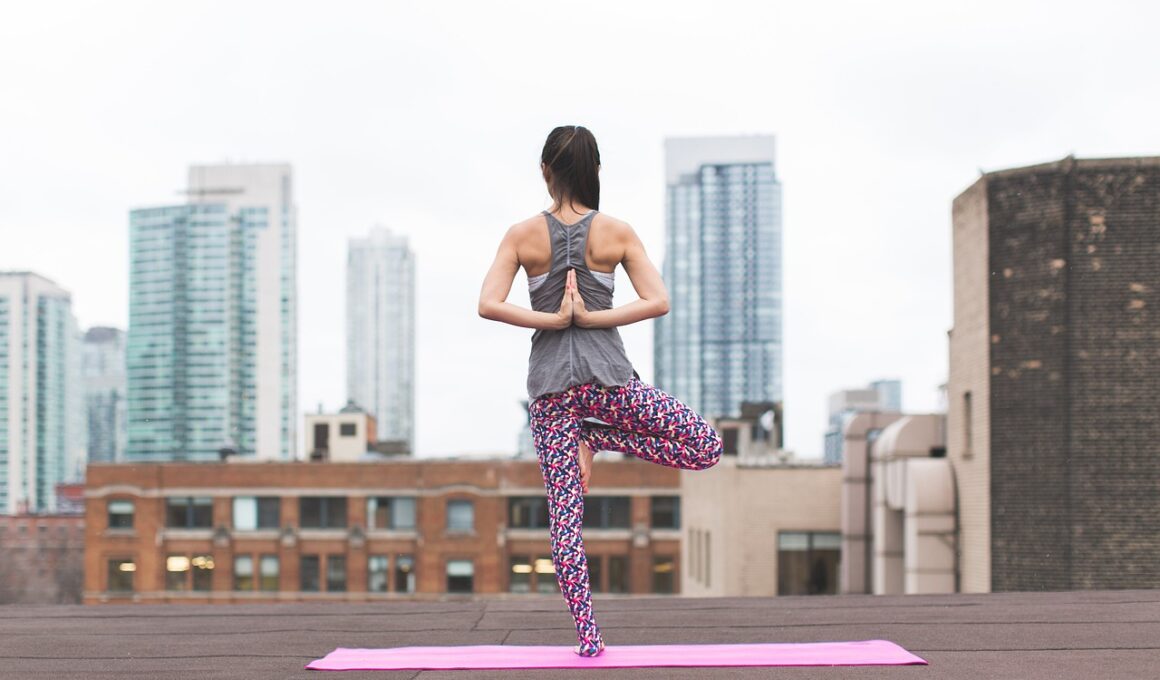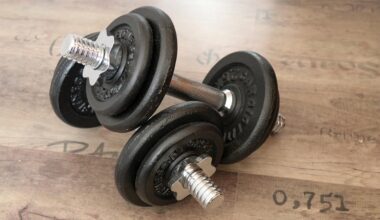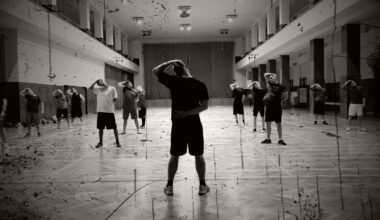Case Studies: Success Stories with Active Isolated Stretching
Active Isolated Stretching (AIS) is a revolutionary approach that focuses on enhancing flexibility and mobility through specialized techniques. Case studies have emerged demonstrating its effectiveness across various populations. In sports, athletes have experienced improvements in performance and a decrease in the risk of injury. By utilizing AIS, individuals can specifically target muscle groups that require improved flexibility. This tailored approach often yields better results compared to traditional static stretching methods. One notable example is a long-distance runner who incorporated AIS into their training regimen. They reported enhanced range of motion, allowing for more efficient running mechanics. The AIS technique promotes quicker recovery, vital for high-performance athletes. This case illustrates not only the potential athletic benefits but also the rehabilitation aspects. Injured individuals have successfully regained range of motion through AIS protocols. Additionally, those with sedentary lifestyles now integrate stretching routines based on AIS principles, resulting in improved overall health. The anecdotal and documented success stories provide a compelling narrative supporting the scientific basis of Active Isolated Stretching in diverse settings.
Furthermore, another success story features a professional dancer who struggled with flexibility issues that hampered her performances. Through a dedicated AIS regimen tailored to her unique needs, she was able to overcome her physical limitations. After several weeks of incorporating AIS into her daily routine, she noticed profound improvements in her flexibility and overall body control. This transformation allowed her to achieve previously unattainable dance moves, enhancing both her skills and performance confidence. The combination of active muscle contractions and targeted stretching allowed for a gradual increase in her range of motion without risking injury. These specific AIS techniques not only helped her physically but also contributed positively to her mental well-being, as she felt empowered and capable of pushing her boundaries. She shared her journey with fellow dancers, who then began adopting AIS practices within their training programs. This ripple effect demonstrates how one individual’s success can inspire an entire community to embrace innovative approaches to flexibility training. It showcases the versatility of Active Isolated Stretching, making it an ideal choice for various activities and lifestyles.
In the realm of rehabilitation, the story of an elderly woman recovering from hip surgery truly exemplifies the effectiveness of Active Isolated Stretching. Post-surgery, she was determined to regain her mobility and independence. With the guidance of a physical therapist familiar with AIS methods, she began a tailored stretching program that emphasized gradual flexibility improvements. Each session focused on isolating specific muscle groups surrounding her hip joint, thereby fostering a safe and effective recovery process. Within months, she was able to regain her confidence in movement, which significantly improved her quality of life. This particular case highlights how AIS not only aids in physical recovery but also plays a crucial role in mental and emotional healing for those coming back from surgeries. The interaction between the therapist and the patient allowed for detailed adjustments to be made based on her progress. This adaptability ensured that she remained within her comfort zone while still achieving optimal results. The combination of personalized attention and a well-structured stretching routine proved to be a game-changer in her rehabilitation journey.
Enhancing Athletic Performance through AIS
Another inspiring case involves a college soccer player who faced frequent injuries due to tight muscles and overall inflexibility. After struggling with multiple strains, she decided to incorporate Active Isolated Stretching as a complement to her training regimen. Working alongside a certified trainer who specialized in AIS, she began a focused stretching plan before and after practice sessions. The customized approach emphasized key areas like hips and hamstrings, which were critical for her position on the field. Over the course of a season, she noticed a significant drop in injury occurrence and an increase in endurance levels during games. Her coaches were impressed with her enhanced agility, attributing these improvements to her commitment to AIS practices. Her story illustrates the preventative benefits of integrating AIS into athletic training. The proactive stance she took towards injury prevention allowed her to perform at her highest level without setbacks. This case serves as a key example of how AIS not only aids current flexibility and mobility issues but also acts as a pivotal strategy for maintaining long-term athletic health and performance.
In addition to athletes, young gymnasts have benefited profoundly from Active Isolated Stretching techniques. One instance involved a 12-year-old gymnast seeking to improve her overall performance, especially her splits and backbends. The incorporation of AIS enabled her to progressively stretch without forcing the body, which was crucial at her developing age. The structured yet flexible nature of AIS allowed her to listen to her body, making it an ideal method for children. Over time, her flexibility blossomed, and she was able to execute difficult routines with confidence and ease. Her coaches noted not only her improved abilities but also a notable increase in her passion for gymnastics. This case underscores the importance of proper stretching techniques during formative years, guiding young athletes toward healthier training practices. AIS filled the gap in traditional stretching education, emphasizing the significance of controlled movements. As a result, her holistic approach fostered a deep understanding of body mechanics, setting her up for success in every competition. This positive experience further validated the role of AIS in youth training programs and highlighted its adaptability for younger populations.
AIS in Holistic Health Practices
Lastly, a case study on a busy corporate executive looking to manage stress and maintain physical health illustrates AIS’s benefits beyond athletics. With a sedentary work lifestyle, she struggled with chronic tension and muscular discomfort due to extended hours at her desk. Seeking guidance from a wellness coach, she was introduced to Active Isolated Stretching practices. Through a combination of short, focused sessions throughout her day, she was able to relieve tension and improve her posture. The targeted stretches not only alleviated discomfort but also provided her with a sense of calm and clarity during hectic workdays. Witnessing her transformation, her colleagues began to express interest in similar practices as part of their health routines. By sharing her experiences and the stress-relieving benefits of AIS, she quickly became a champion for wellness in her workplace. This case underscores the adaptability of Active Isolated Stretching, proving it can fit seamlessly into diverse lifestyles. Whether for elite athletes or busy professionals, AIS stands out as a valuable tool for enhancing mobility and overall health.
In summary, numerous case studies highlight the profound impact of Active Isolated Stretching on various individuals’ mobility and overall quality of life. From athletes and dancers to elderly patients and corporate professionals, AIS offers tailored solutions that cater to the unique needs of each person. Each story illustrates how this method transcends traditional stretching techniques, providing numerous physical and mental benefits. The versatility of AIS enables its integration into diverse environments, emphasizing its relevance in health, fitness, and rehabilitation. This adaptability opens doors for further exploration of its applications, creating a foundation for innovative stretching routines. It also encourages practitioners to delve deeper into the science behind AIS, fostering education and awareness. As more individuals share their success stories, it becomes evident that Active Isolated Stretching is not just a trend but a holistic approach to health that can benefit all. The accumulation of experiences showcases a growing shift towards proactive health management through improved flexibility and mobility. Embracing these practices can significantly enhance both personal well-being and overall performance in daily activities.
Based on these compelling narratives, it is clear that Active Isolated Stretching serves as a vital resource for anyone looking to enhance their physical capabilities and improve their well-being. Through targeted techniques designed to incrementally increase flexibility without strain, individuals from various backgrounds are experiencing transformative results. The personal journeys recounted evidence AIS’s capability to reduce injury, enhance performance, and support effective rehabilitation. As more people adopt this revolutionary approach, it will undoubtedly influence the world of fitness, rehabilitation, and overall health positively. Future research and exploration of AIS may uncover even more potential benefits and applications, broadening its reach. Sharing these success stories sheds light on the diverse populations that can benefit from incorporating AIS into their routines. It inspires practitioners to innovate and personalize their approaches, ensuring sustained dedication to flexibility and mobility training. By continuing to document both qualitative and quantitative results, the potential for AIS to revolutionize movement practices becomes increasingly evident. Ultimately, Active Isolated Stretching stands as a testament to the power of proper stretching techniques and their ability to unlock new levels of physical potential for individuals across the globe.


